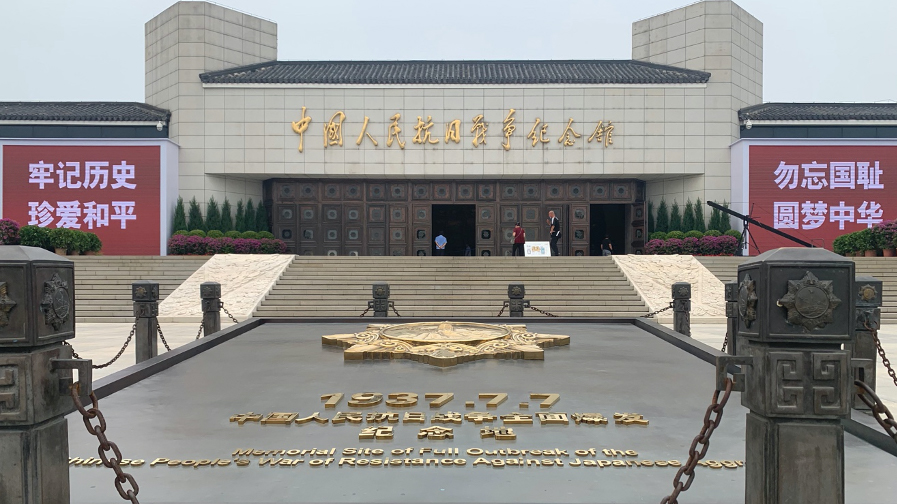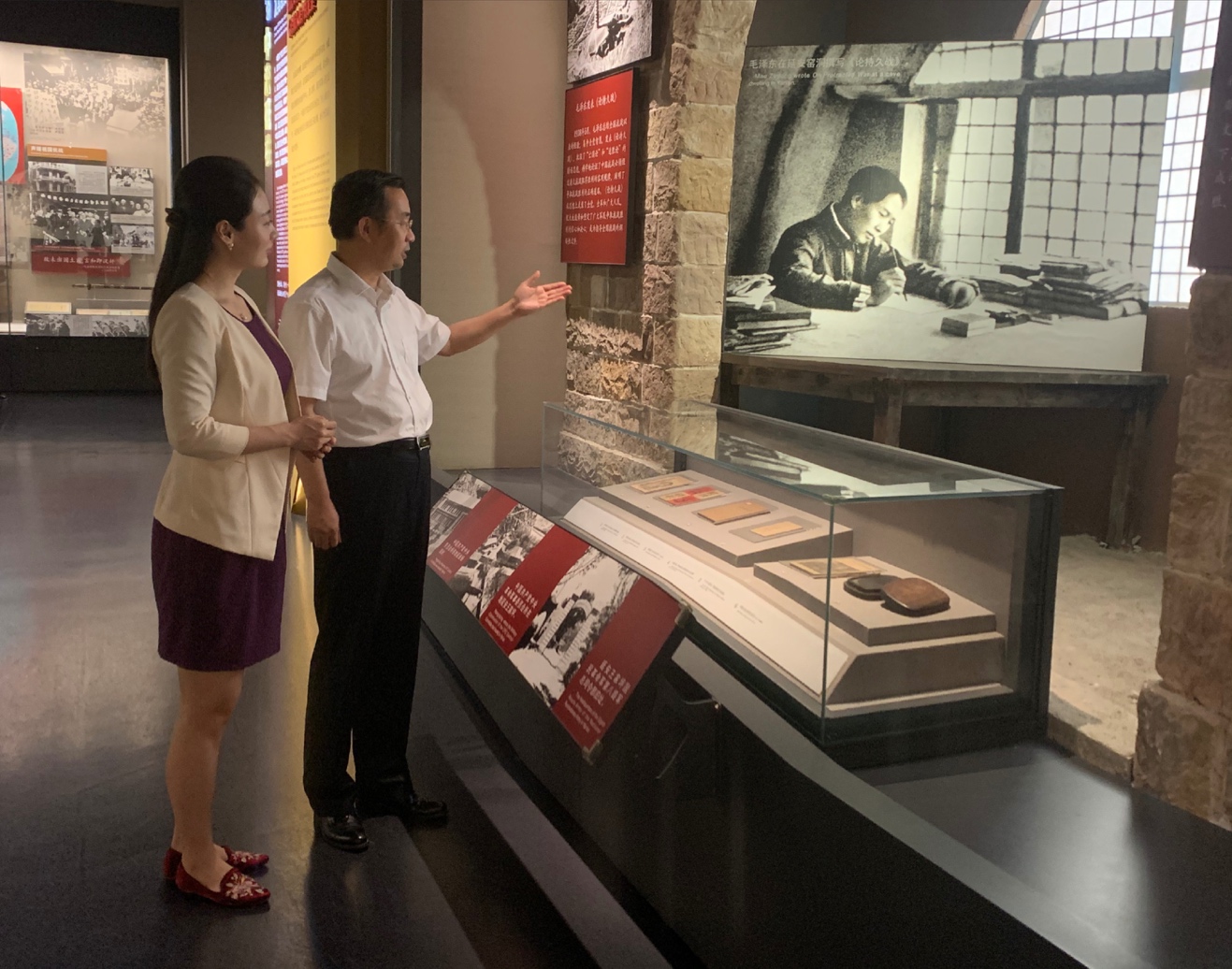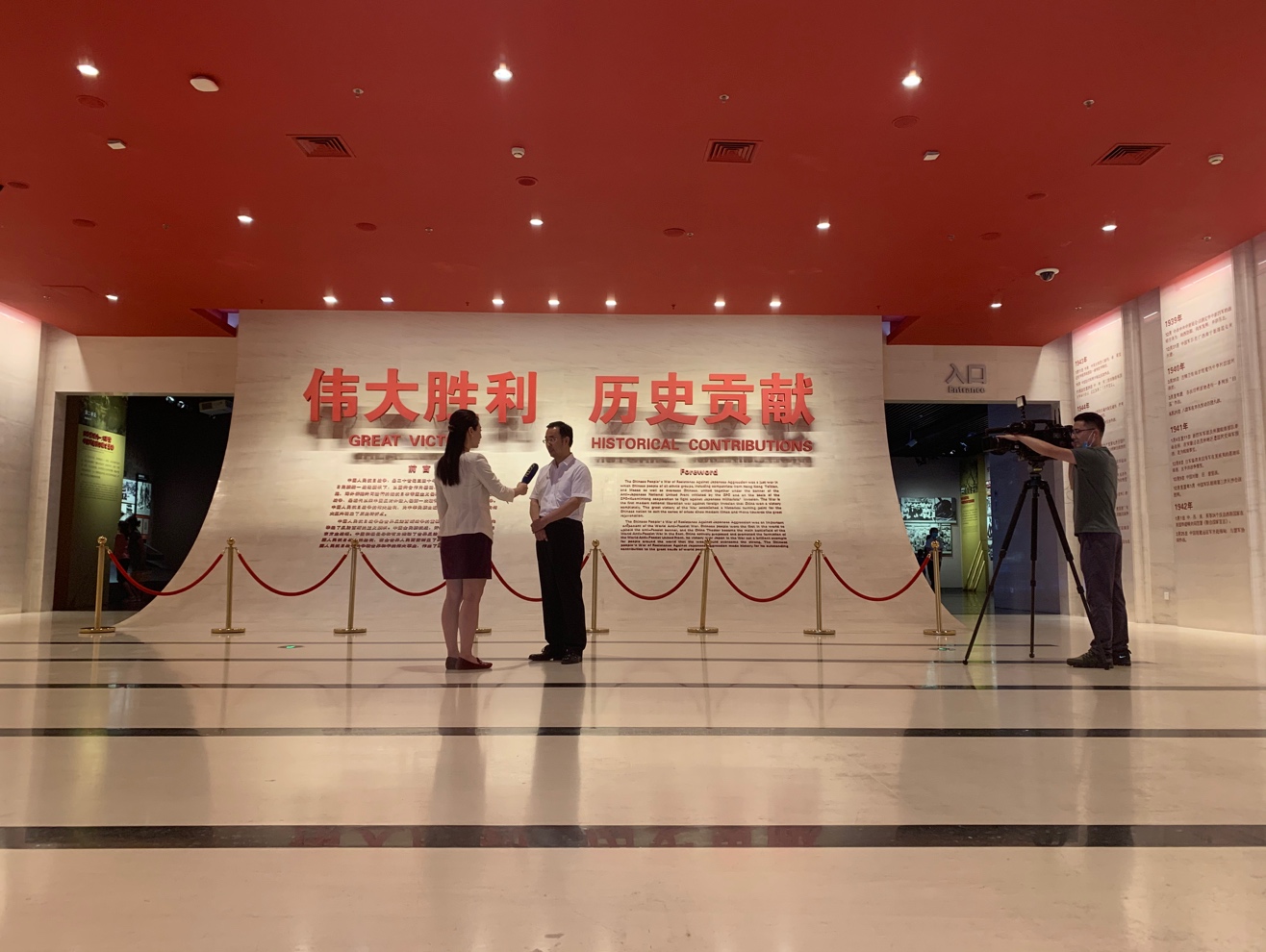02:47

2020 marks the 75th anniversary of the victory of the Chinese People's War of Resistance against Japanese Aggression and the World Anti-Fascist War.
CGTN's reporter visited the Museum of the Chinese People's War of Resistance Against Japanese Aggression and interviewed the curator. Here's her report on the stories of Chinese heroes who defeated Japanese invaders and safeguarded China's independence.
Remembering history, commemorating martyrs, cherishing peace and ushering in the future.
That's the main purpose of the Museum of the Chinese People's War of Resistance Against Japanese Aggression after it was built in 1987.
Luo Cunkang, the curator of the museum, has been working here for more than two decades. He said the museum is an important window for people from various countries to learn about China's anti-aggression war history.

Luo Cunkang (R), the curator of the museum, talks with CGTN's reporter Su Yuting. /CGTN
Luo Cunkang (R), the curator of the museum, talks with CGTN's reporter Su Yuting. /CGTN
"We launched the large-scale exhibition with the theme of "Great Victory and Historical Contributions," where 1,170 pictures and 2,834 cultural relics are on display, depicting the 14-year long of battle. Lots of the relics are very impressive, for example, there is a helmet where bullet shells were left by soldiers of the 29th Army Corps of China during the war. There is also a letter engraved on a lamp cabinet, written by a chief staff to his wife and children, which is an important piece of evidence of the troops' devotion in the war," Luo said.
"There are also lots of files of the Chinese laborers who were forced by Japanese troops to engage in military construction projects. In 1943, the chiefs of China, the US and the UK held a meeting in Cairo, the capital of Egypt and issued the Cairo Declaration. You can see coverage of that event on the first page of the New York Times in America." he added.
History can serve as a guide for the future. Luo said these relics displayed in the museum are not only shown to Chinese people and Japanese people, but people from across the world. The aim is to commemorate the sacrifices made in the war while avoiding a repeat of those catastrophes, and was an important part of the World Anti-Fascist War.

Luo Cunkang (R), the curator of the museum, talks with CGTN's reporter /CGTN
Luo Cunkang (R), the curator of the museum, talks with CGTN's reporter /CGTN
Luo added: "The Chinese people's war of resistance against Japanese aggression was a war of justice against external enemies, and was an important part of the World Anti-Fascist War. It's not only the first great victory that China won in its resistance against external aggression since ancient times, but also made enormous historical contributions toward the victory of the World Anti-Fascist War and the world peace. In the past, we united together to fight against fascism, and today, we should also work together to build a community with a shared future for mankind."
Never forgetting the history and looking forward to the future has become the common aspiration of people around the world. Peace and development are the main themes of the modern era. The Chinese government and people are determined to join hands with people from all other countries to build a harmonious world with long-lasting peace and common prosperity.